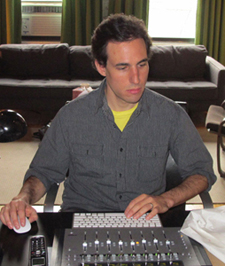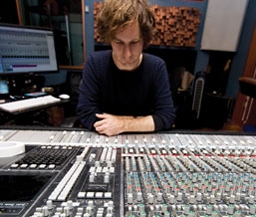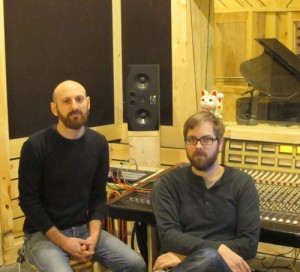Producers Weigh In On Kickstarter and Crowdfunding Recording Budgets
Over the past two years, crowdfunding – whether it’s through Kickstarter, Indiegogo, PledgeMusic, or a custom page on an artist’s website – has grown at a rate that’s impossible to ignore. At the current pace, contributions to Kickstarter campaigns alone are expected to account for over $150 million in arts funding in 2012. That’s more than the entire National Endowment for the Arts.
While this figure does speak to the historically low levels of national arts funding, it also says a lot about how quickly crowdfunding has become a major force in the creative economy. Just two months ago, Amanda Palmer raised over one million dollars for her new album and art book, and today, self-released artists who use the platform to secure tens of thousands of dollars to make new albums have begun to look “normal.”
In June of this year, a website called AppsBlogger shared an infographic that suggested that as many as 68% of music projects on Kickstarter ultimately reached their funding goals. But based on the newest numbers from Kickstarter, the success rate for music projects is closer to 55% today. Thankfully, this is still a bit higher than the overall Kickstarter success rate, which hovers around 44%.
According to the service itself, there’s a stark line between the campaigns that succeed and the ones that fail: “Funding on Kickstarter is all-or-nothing in more ways than one,” the company warns. “While 12% of projects finished having never received a single pledge, 82% of projects that raised more than 20% of their goal were successfully funded.”
Some artists, it seems, know what they’re doing, while some quite simply, don’t.
So what is it that separates the winners from the losers? The research suggests that it all comes down to one word: Planning. Studies show that winning campaigns are most likely to come from artists with large social networks, who create videos, offer many different reward levels, keep their campaigns short and focused, and – perhaps most importantly of all – set sensible, pragmatic goals.
What To Budget For
There are many how-to articles on the web that will give you comprehensive advice on all the ins and outs of a successful crowdfunding campaign. This isn’t one of them.
Today, we’ll focus on just one thing: setting a realistic goal for your campaign. To fill in this blank and help figure out a budgetary goal that will work for you, we reached out to a handful of our most-trusted producers, engineers and studio owners from various levels of the industry.
Nadim Issa of Let ‘Em In Music does good work and keeps his rates affordable, which has helped him become one of the busiest studio owners in his zip code – especially where up-and-coming artists are concerned. His spacious and casual Park Slope tracking room has hosted bands like Ava Luna, Soft Black and Dinosaur Feathers, as well as singer-songwriters like Sharon Van Etten and Julia Nunes.
Issa says that a growing number of his clients are coming to rely on crowdfunding, and when we spoke with him, he had just finished work on a project that was funded entirely through Kickstarter.
“For a full-length album, I’d say to shoot for at least $5,000 and up to $20,000,” says Issa. He then adds that the $5,000 figure would allow for a spirited, quick-and-dirty recording more than a refined production.
“If the artist already has a significant built-in audience then certainly that number can be much higher than either of those. Maybe $5,000 for every week spent working on the album is an appropriate rule of thumb.”
Let ‘Em In Music stands at the more affordable end of the spectrum, but Issa’s basic figures were echoed among many of the producers and engineers we spoke to.
Jonathan Jetter of Right Angle Recording in Manhattan has also found work with a growing number of crowdfunding artists. Nearly all of them, he says, have used “some kind of humorous promo video to advertise the campaign.”
To him, the $5,000 figure also seems a bit too low for a traditional full-length album. He mentions that his client Abby Payne raised more than $6,000 for her new EP, while Railbird used crowdfunding to secure a few thousand to work on their new single and video.
“Obviously, the target amount varies based on each band’s circumstances,” Jetter says, “but I think $10,000-$12,000 for a full-length is a good ballpark number.”
“Things will sound good, and there’s enough money to send the album out for mastering with someone who’s not necessarily working at [one of the top rooms], but who is still very good. The band will have to rehearse a lot, pre-production will be essential, and we’ll have to move fairly quickly – but we won’t be cutting corners, and it still leaves just enough wiggle room to deal with one or two unexpected things.”
“If we’re contracting a bunch of session players, or if we’re also trying to build in a PR budget, then that number might have to go up a bit. And if I’m just mixing the record, $400/song seems to be the ballpark number for success without bankruptcy for anybody.”
Even producer Chris Coady, who’s made a name for himself making albums that have become cultural touchstones with bands like TV on the Radio, Yeah Yeah Yeahs, Blonde Redhead and Beach House agrees that a wide variety of budgets can work. You just have to be aware of what you’re getting yourself into.
“You can make a good-sounding record for $5,000. Of course, at that rate you’d probably just be buying some interfaces and microphones and speakers and figuring out how to use them,” said Coady. who got his humble start more than a decade ago when a friend’s band gave him their entire recording budget to buy a 24-track tape machine and hand-me-down Soundcraft desk.
“Any good producer would probably want at least $10,000, and you could make a good record for that,” Coady says. “You could also make a great record for $100,000. At that point, you’re really buying more and more time.”
“Any good producer would probably want at least $10,000, and you could make a good record for that,” Coady says. “You could also make a great record for $100,000. And at that point, you’re really buying more and more time.”
Coady maintains a healthy skepticism about what crowdfunding might mean for the long-term health of the music. In our conversation, he wonders aloud if artists lose some of their purity by appealing for funds in this way, and when he looks at some of the most desperate campaigns, can’t help but feel a little sad. But Coady also says that on some level, the approach does appeals to his punk rock roots, and from a practical standpoint, it looks like the successful campaigns can work. Crowdfunding has paid him his rate once so far.
Narrowing Down The Figure
Producer engineer Ben Rice, who runs studio Degraw Sound (which we profiled last month) presents a basic equation that might help musicians figure out what their budgets should be.
“I think a good starting point for most indie bands is to budget for a minimum of one day per song for tracking and a minimum of a half day per song for mixing. Apply that to whatever the studio and/or producer rate is, and then add in appropriate pre-production sessions (which really can vary from project to project and producer to producer) as well as at least $100-150 per song for proper mastering.”
“For EPs, I think it’s good to have an extra day built into the budget, and for full-lengths, an extra couple of days. There are usually new ideas that come out in the studio, and it’s nice to have the space and time to try them out. Those little things can often elevate a recording from a ‘professional sounding demo’ to ‘a record’.”
“If the recordings will be overdub-heavy or have more elaborate orchestration, whether it’s layering guitars, keys, strings, horns – you name it – then tracking and mixing times would go up proportionately. If the band is going for a live type of vibe, then the tracking could move even quicker.”
That’s about as straight-forward as it can be said. If there’s a common theme here, it’s that there is no one-size-fits-all figure. Just guidelines.
To really hash out the details and come up with a concrete number for an effective campaign, it’s best to get a producer involved early on in the process. That’s what John Davis, co-owner and engineer at The Bunker Studio in Williamsburg had to say. Davis has worked with artists like The Black Keys, Dangermouse, and Lettuce, and his no-nonsense approach to making records has helped him and partner Aaron Nevzie expand into an impressive new 3,000 square-foot space this year.
“The biggest mistake people make in any case is not consulting with an experienced producer/engineer beforehand,” he says.
“The other biggest mistake is probably working with people who are completely useless and just call themselves ’producers‘ because they make beats.”
“People are a little too quick to give themselves titles these days – whether it’s a ‘mastering engineer’ who just bought some software and decided that, he too can overcompress your record – or someone who thinks that being a ‘producer’ means just sitting around in the control room, arguing with the band and watering down their vision.”
It may sound a little harsh on paper, but Davis has seen this first-hand, just like so many of us have: The well-intentioned artists, without guidance, working on albums that never seem to come to completion; or that lurch forward in jerking, sporadic chunks of undefined frenzy, until they fizzle out into a useless pile of exhausted dreams.
“People with experience know how much time it really takes to make things and how to stay on track,” Davis reminds us. “If you talk to anyone who knows what they’re doing they’ll tell you that you can’t do shit with $4,000 dollars if you want to make a full-length. You should be making an EP.”
“With a real producer – anyone who has genuine experience – their job is to deliver a master on time and in budget. If anyone tells you they can do it for a lot less, be very suspicious and ask to hear their work. They probably don’t have much experience at all.”
When he presents some offhand numbers, Davis is quick to remind potential crowdfunders to think about whether their budget will just be for production, or if a portion of it will be earmarked to press, distribute and promote the album as well.
“I’ve had some artists who’ve used Kickstarter just to cover the back-end,” he says. “The mastering, duplicating and promoting. That can sometimes be more expensive than the recording.”
“Online PR and marketing is its own little cottage industry now,” Davis says. “Sometimes people talk about how it’s so amazing that this little band is blowing up on Pitchfork, but they don’t realize that little band has one of the biggest promotion agencies in the world backing it up.”
“There are certain companies who are good at making bands blow up online,” he adds. “Of course that’s not going to work for everybody, because those agencies have to think you’re capable of being ‘blown-up’ too. But a good producer can say, ‘Well okay, it’ll take $12,000 to produce and then maybe it’s four months of online PR for $8,000, so you’re gonna need $20,000 total – and then we have to think about whether we’ll be pressing these up as well or if there will be a label for that.’”
For Davis, these numbers aren’t meant to be taken literally. The point is that unless you plan your project with someone who has seen many projects through to completion, then the chances are huge that you will suffer the same pitfalls as countless artists before you.
How To Run A Successful Campaign
There’s something to be learned from every failure, and from every success. Thankfully, if you plan on having a career, you don’t have to learn them all first hand. Zach McNees, who weighed in on last week’s mixing tips and contributes his own articles to SonicScoop regularly, has quickly become something of an expert on Kickstarter campaigns in particular.
“At this point I’ve worked on eight recording or mixing projects that were funded by Kickstarter,” he says. “I’ve consulted directly on the setup of four of them.”
“I originally discovered Kickstarter two years ago when my friend, a songwriter called Bleu, launched a campaign to fund the distribution and promotion of a new album that was already in the can. Bleu was really smart, and he sat down with a TV writer who gave him some pointers on how to do his video, and he came up with an amazingly creative set of rewards that really showed he was giving as much back to his fans as they were to him. His goal was $8,000 and he raised just under $40,000, which really blew my mind.”
“More recently, I’ve consulted on the setup and launch of Kickstarter projects for Julia Nunes, Kelley McRae and now, Enter the Haggis who’s campaign is in progress and wrapping up Sept 3rd.
Julia and Enter the Haggis’ campaigns in particular have been a stunning success. Julia raised nearly $80,000 and Enter the Haggis are close to $60,000 right now. What really stuns me the most is the average dollar amount spent per backer. Enter the Haggis’ fans are averaging $78 per person at the five week mark into their campaign. Amazing.”
For all his enthusiasm, McNees is still clear-eyed about setting workable goals. “I wouldn’t recommend using Kickstarter if you’re not going to try to raise at least $10,000,” he says. “The reason for that is that you can only go to that well so many times to ask your fans to support you and a product that doesn’t exist yet. For the more established acts with a strong fan base, a year to a year-and-a-half is a good rule of thumb in between projects.”
McNees, sees this approach as perhaps the most sensible option for established self-releasing artists. But he doesn’t think it’s for everybody.
“Young bands that are just getting started and haven’t played many shows or written many songs would be wise to avoid diving directly into fan-funding,” McNees warns. “You have to have fans for it to work!”
“Establish yourself as an artist that people want to listen to and go out see, and then when you’re ready to make your record, hopefully you’ll be able to arrange it so that you’re not paying 100% out of pocket.”
Crowdfunding isn’t the only way to go, and there’s no guarantee of success if you do decide to try it. But if you have some kind of following already, can secure a little expert help, and set some realistic goals, it’s certainly a workable strategy. Like the producers we spoke to for this article, I’ve seen that first hand.
I’ve mixed bands that have used this method to cover costs and I’ve set up campaigns for non-profit arts organizations that rely soley on this kind of support. If there’s one last piece of advice that I’d add from my own perspective, it’s that the key word in fan-funding is “fan.”
As much as we’ve talked about what to secure for yourself, effective campaigns are not so much about what you want and need, but about what you give to your audience. Zach McNees seems to agree:
“Most importantly, any artist thinking about getting into fan-funding needs to be prepared to prove to their audience that they’re willing to give back just as much to their fans put in,” he says. “Julia Nunes said ‘Kickstarter should be less like a fund-raiser and more like a bake sale’.”
“That’s really what it comes down to. If your fans understand that you’re putting your heart and soul into it and going above and beyond to provide them with truly original, unique and exclusive rewards, your campaign will be a success.”












So bummed
August 18, 2012 at 5:53 am (13 years ago)There is nothing about music or how it should or could be made. This is offensive.
TrustMeI'mAScientist
August 18, 2012 at 4:16 pm (13 years ago)It’s true that there is no talk of technique or style or aesthetics in this story. Apologies if that was a bummer for you — But we do have many articles on those topics that you might enjoy!
The goal of this article was to ask experienced full-time professionals what they feel are pragmatic goals that will help artists with career aspirations to make the music they want to make with out compromise — or a steep learning curve.
Although we focused on interviewing affordable and mid-priced professionals, it is true that these goals are not necessarily appropriate for musicians who are content to remain passionate hobbyists.
Looking back on it, I wish that the editorial aspect of this piece had made that distinction more clear. Mea culpa on that one. I’ll try to do better next time.
Purplefish
August 19, 2012 at 5:38 am (13 years ago)I personally found it very informative. But I am a studio owner so this reinforces what I tell most bands that I deal with. Thanks!!
Astral Plane Studios
September 5, 2012 at 7:21 pm (12 years ago)I know exactly what you mean Purplefish. It’s always great to see the things you tell other musicians told by others. Gotta love reinforcement.
TrustMeI'mAScientist
August 18, 2012 at 6:18 pm (13 years ago)I’ve received a few great emails about this story, and want to take a quick moment to add some context.
The goal of this article was to ask full-time professionals for their experienced opinions and to help artists who have career aspirations to set pragmatic goals that will allow them to make great music without undue compromise or a steep learning curve.
Although we intentionally interviewed affordable and mid-priced professionals only, it’s true that even these historically low budgetary goals are not necessarily appropriate for amateur musicians who are experimenting with their very first recordings, or for those who are content to remain passionate and principled hobbyists.
Looking back on it, I wish that the slim editorial portion of this piece had made that distinction more clear. I guess I didn’t think if it, because SonicScoop is a production magazine geared toward professional readers (many of whom often work with budgets higher than these.)
For the record, I don’t intend to suggest that people who work outside of a sustainable commercial framework are making music that’s any less “good” or “valid” than those who work inside of it. Far from it.
Ultimately, this article could have been more diplomatic and more comprehensive if I had done a better job of describing its parameters. I’ll certainly think of that the next time I approach an article like this one!
But as for the actual advice expressed within? I think it’s all very smart, sensible, and reflective of the baseline budgets that tend to go into the commercial releases that tend to find the audiences they deserve.
It’s one of our goals to present a wide variety of professional voices and a myriad of opinions. To that end, I believe it’s very valuable that each of these working producers expressed their unique perspectives in an honest and straightforward way.
Thanks for the feedback,
Justin